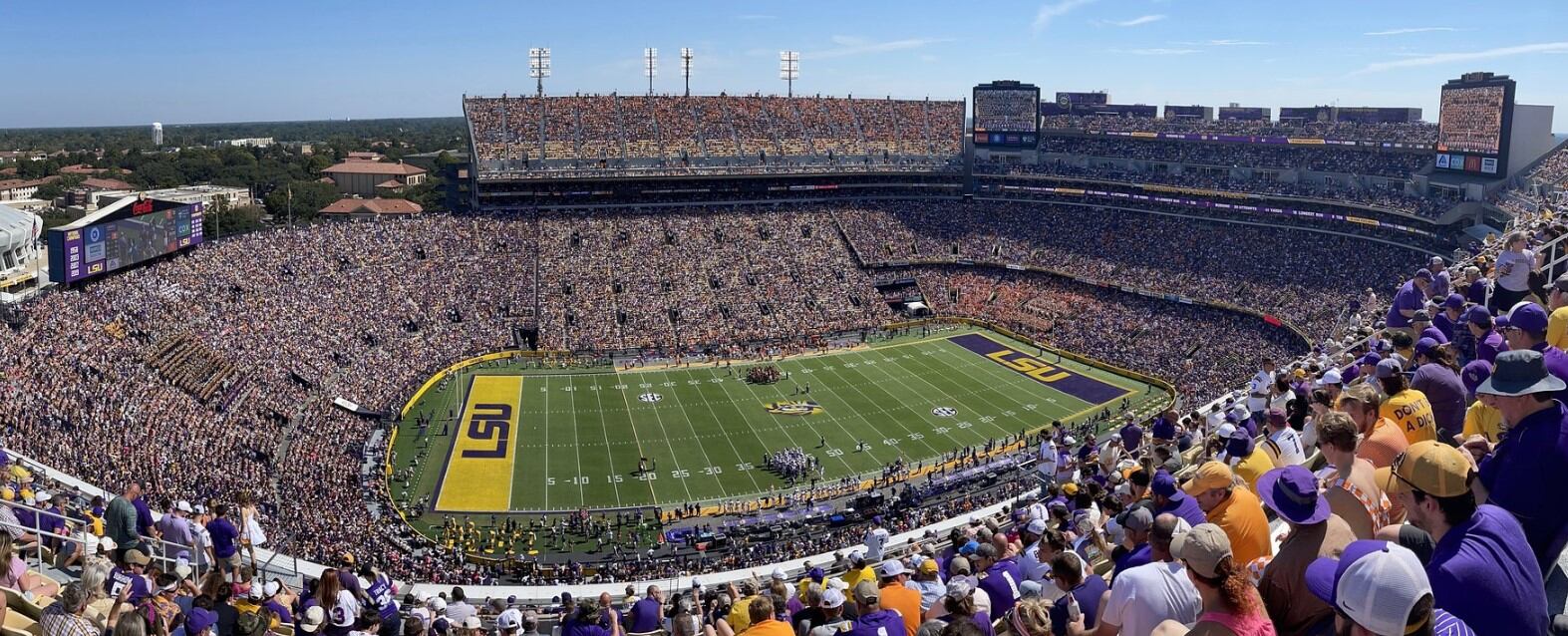
Tiger Stadium, also known as Navin Field and Briggs Stadium, was a historic baseball park located in Detroit, Michigan. Over the years, it became an iconic landmark and the home of the Detroit Tigers from 1912 to 1999. The stadium had a rich and fascinating history, filled with memorable moments, record-breaking performances, and a passionate fanbase.
In this article, we will delve into 18 extraordinary facts about Tiger Stadium, shedding light on its unique features, legendary players who graced its field, and the unforgettable moments that forever etched their place in baseball history. From its construction amid the golden age of baseball to its final farewell, Tiger Stadium left an indelible mark on the city of Detroit and the hearts of baseball fans worldwide.
Key Takeaways:
- Tiger Stadium, the oldest in Major League Baseball, hosted legendary players, historic moments, and the first night game. Its unique design and record attendance made it an unforgettable icon in sports history.
- With its double-decker design, famous right field overhang, and historic World Series moments, Tiger Stadium left a lasting legacy. Despite its demolition, its impact on baseball and Detroit remains timeless.
The Oldest Stadium in Major League Baseball
Tiger Stadium in Detroit, Michigan, holds the prestigious title of being the oldest stadium in Major League Baseball. With its rich history and iconic presence, it has become a beloved landmark in the city.
Home of the Detroit Tigers
Tiger Stadium served as the home of the Detroit Tigers for a remarkable 87 years, from 1912 to The stadium witnessed countless memorable moments in baseball history, including multiple World Series championships.
Seating Capacity
Tiger Stadium was known for its impressive seating capacity. At its peak, it could hold over 52,000 fans, creating an electric atmosphere during games and allowing for epic roaring cheers and chants.
Unique Double-Decker Design
One of the standout features of Tiger Stadium was its double-decker design, giving spectators a fantastic view of the game from all angles. This architectural marvel added to the stadium’s allure and created a distinct atmosphere.
Legendary Players
Throughout its existence, Tiger Stadium saw some of the greatest baseball players in history step onto its hallowed grounds. Legendary figures such as Ty Cobb, Al Kaline, and Hank Greenberg graced the field, leaving a lasting impact on the sport.
First Night Game
Tiger Stadium made history on June 15, 1948, by hosting the first-ever night game in Major League Baseball. The introduction of floodlights brought a new dimension to the sport and created an unforgettable experience for fans.
The Famous Right Field Overhang
Tiger Stadium’s unique architectural feature was the overhang in right field. Known as “The Reach,” it provided an exciting challenge for outfielders trying to catch home runs. This distinctive aspect of the stadium added to its character.
Historic World Series Moments
The World Series has witnessed several iconic moments at Tiger Stadium. From Kirk Gibson’s unforgettable home run in 1984 to Mickey Lolich’s dominant pitching performances in 1968, the stadium has been the backdrop for historic postseason battles.
Four Deck Support Columns
Tiger Stadium was supported by four massive deck support columns, each measuring over 100 feet tall. These columns gave the stadium a distinct and imposing presence, adding to its grandeur.
Record Attendance
In 1935, Tiger Stadium set a record for the highest attendance at a baseball game, with 54,497 fans crammed into the stands. The electric atmosphere and the sheer number of fans created an unforgettable experience that will forever be etched in history.
Legendary Broadcasters
Tiger Stadium was home to some of the most iconic voices in sports broadcasting. Legends like Ernie Harwell and George Kell brought the games to life through their eloquent and passionate commentary.
Home Run Heroes
Tiger Stadium was known as a hitter’s paradise, and it witnessed numerous legendary home runs. Players such as Babe Ruth, Mickey Mantle, and Reggie Jackson all launched mammoth shots that left fans in awe.
Farewell Season
After serving as the Tigers’ home for almost nine decades, Tiger Stadium bid farewell to its faithful fans on September 27, It was a bittersweet moment, marking the end of an era in the history of baseball.
Historic Landmark Status
In recognition of its cultural and historical significance, Tiger Stadium was designated as a historic landmark in This status ensured the preservation of the stadium’s legacy for future generations to appreciate.
College Football Games
Tiger Stadium wasn’t just home to baseball; it also hosted college football games. The University of Detroit Mercy and local high schools enjoyed the thrill of playing in one of baseball’s most legendary stadiums.
The Final Out
On September 27, 1999, after 7,499 regular-season games, the final out was made at Tiger Stadium. The magnificent stadium bid farewell, leaving a lasting impression on the hearts of baseball fans.
Demolition and Legacy
Despite efforts to preserve Tiger Stadium, it was eventually demolished in However, its legacy lives on through memories, photographs, and the deep connection it forged with the city of Detroit and the sport of baseball.
An Unforgettable Icon
Tiger Stadium will forever be remembered as an unforgettable icon in Major League Baseball. Its storied history, iconic features, and the countless legendary moments that unfolded within its walls solidify its place as one of the greatest stadiums in sports history.
Conclusion
Tiger Stadium is truly an extraordinary landmark with a rich history and iconic status in the world of sports. From its impressive seating capacity to its record-breaking attendance figures, this stadium holds a special place in the hearts of sports enthusiasts. The unique features, such as the flagpole in center field and the intimate atmosphere created by the seating arrangement, further contribute to its charm.
As the years go by, Tiger Stadium continues to be a symbol of the passion and love for sports in Detroit. Its legacy lives on in the memories of all those who have experienced the thrill of watching a game within its hallowed walls. Whether it’s reminiscing about the famous moments or marveling at its architectural marvel, Tiger Stadium will forever be remembered as one of the most extraordinary sports arenas in the world.
FAQs
1. When was Tiger Stadium constructed?
Tiger Stadium was constructed in 1912.
2. What is the seating capacity of Tiger Stadium?
Tiger Stadium had a seating capacity of around 52,000 spectators.
3. Which baseball team called Tiger Stadium its home?
The Detroit Tigers called Tiger Stadium their home from 1912 to 1999.
4. What were some of the famous moments in Tiger Stadium’s history?
Tiger Stadium witnessed many memorable moments, including the 1968 World Series win by the Detroit Tigers and numerous iconic home runs.
5. Is Tiger Stadium still in use?
No, Tiger Stadium was partially demolished in 2009 and the remaining portion was converted into a youth sports facility called “The Corner Ballpark.”
Tiger Stadium's legacy lives on, captivating fans with its rich history and unforgettable moments. From the roar of the crowd to the crack of the bat, this iconic ballpark has left an indelible mark on the world of sports. If you're hungry for more fascinating facts, why not explore the vibrant world of sports and recreation in Baton Rouge, Louisiana? Discover the unique attractions and activities that make this city a true gem for sports enthusiasts and adventure seekers alike.
Was this page helpful?
Our commitment to delivering trustworthy and engaging content is at the heart of what we do. Each fact on our site is contributed by real users like you, bringing a wealth of diverse insights and information. To ensure the highest standards of accuracy and reliability, our dedicated editors meticulously review each submission. This process guarantees that the facts we share are not only fascinating but also credible. Trust in our commitment to quality and authenticity as you explore and learn with us.


